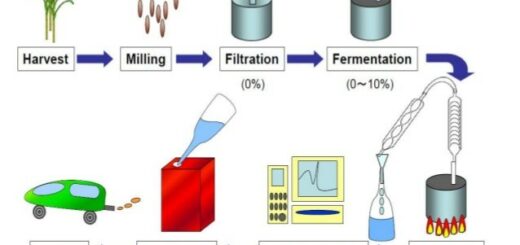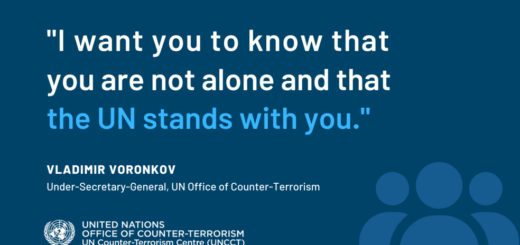National Current Affairs – UPSC/IAS Exams- 11th May 2019
Competition Commission of India
Topic: Polity and Governance
In News: The Competition Commission of India (CCI) has started a probe against Google for alleged anti-competitive practices with respect to its popular Android platform for mobile phones.
More on the Topic:
- The fair trade watchdog has been looking into the matter for sometime, especially after a European Commission ruling last year. The regulator had started investigation into alleged abuse of Android platform and the issues are similar to those dealt with by the European Commission.
About Competition Commission of India:
- Competition Commission of India is a body of the Government of India responsible for enforcing The Competition Act, 2002 throughout India and to prevent activities that have an adverse effect on competition in India.
- It was established on 14 October 2003.It became fully functional in May 2009.
- CCI is quasi-judicial statutory body established under The Competition Act, 2002.
- The objectives of the Act are sought to be achieved through the Competition Commission of India (CCI).
- CCI earlier consisted of a Chairperson and 6 Members appointed by the Central Government. Government has now approved reduction of members from 6 to 3.
- The duty of the Commission is to eliminate practices having adverse effect on competition, promote and sustain competition, protect the interests of consumers and ensure freedom of trade in the markets of India.
- The Commission is also required to give opinion on competition issues on a reference received from a statutory authority established under any law and to undertake competition advocacy, create public awareness and impart training on competition issues.
- The Competition Act, 2002 prohibits anti-competitive agreements, abuse of dominant position by enterprises and regulates combinations (acquisition, acquiring of control and Merger and acquisition), which causes or likely to cause an appreciable adverse effect on competition within India.
Source: The Hindu
India facing critical shortage of healthcare providers: WHO
Topic: Health
In News: Despite the health sector employing five million workers in India, it continues to have low density of health professionals with figures for the country being lower than those of Sri Lanka, China, Thailand, United Kingdom and Brazil, according to a World Health Organisation database.
More on the Topic:
- This workforce statistic has put the country into the “critical shortage of healthcare providers” category. Bihar, Jharkhand, Uttar Pradesh and Rajasthan are the worst hit while Delhi, Kerala, Punjab and Gujarat compare favourably.
- Southeast Asia needs a 50% increase in healthcare manpower to achieve universal health coverage by 2030. India faces the problem of acute shortages and inequitable distributions of skilled health workers as have many other low- and middle-income countries.
- The need of the hour is to design courses for different categories of non-physician care providers.
- Competencies (and not qualification alone) should be valued and reform must be brought in regulatory structures to provide flexibility for innovations.
- Data on the prevalence of occupational vacancies in the health care system in India overall is scarce.
- Government statistics for 2008, based on vacancies in sanctioned posts showed 18% of primary health centres were without a doctor, about 38% were without a laboratory technician and 16% were without a pharmacist.
- The health workforce in India comprises broadly eight categories, namely: doctors (allopathic, alternative medicine); nursing and midwifery professionals; public health professionals (medical, non-medical); pharmacists; dentists; paramedical workers (allied health professionals); grass-root workers (frontline workers); and support staff.
Source: The Hindu
India, likely to add 3 million new jobs by 2023: Indian Staffing Federation (ISF)
Topic: Economy
In News: The Indian tech industry is most likely to append another three million new jobs in the next five years, according to the Indian Staffing Federation (ISF), the apex body for the ‘flexi’ working industry.
More on the topic:
- With the inclusion of these new jobs, the size of India’s tech industry will reach seven million by 2023.
- All these new jobs would come up in digital technology areas such as artificial intelligence, machine learning, Internet of things (IoT), data science, analytics, big data, blockchain and augmented reality.
- Jobs would also be created in newer technology areas that are presently unknown but are expected to emerge and evolve in the next few years.”
- The report reveals that a behavioral change is witnessed in the IT and ITes sectors. India now has around 1,300 captive units.
- Some 400 new captive units are likely to show up in 2019. This shift is accredited to a sharp increase in recruitments by existing and new global in-house centers (GCCs) due to technology innovation activities in India for their global markets.
About Indian Staffing Federation:
- Indian Staffing Federation (ISF) was set up with one common goal Staffing India’s Growth. Staffing an established form of outsourcing globally is yet to be recognized and adopted as an effective means of running a business in India.
- With a penetration of just 2%, ISF is championing this industry, with a suitable and supporting regulation. The Staffing Industry provides a platform for recognised employment, work choice, even compensation, annual benefits and health benefits for the temporary workforce that constitutes almost 70% of India’s total workforce.
- The purpose of ISF is to enhance long-term growth and ensure its continued ability to make positive contributions to the economy as well as the society through the services of the Staffing Industry.
- The principal focus of the Federation’s activities shall be triangular employment relationships, in which the staffing company is the employer of the temporary worker, who works under the supervision of the user company.
Source: The Hindu
Appointment of SC Judges
Topic: Polity and Governance
In News: SC Collegium has recommended names of 4 judges to the government, thereby pushing for full strength of judges in the Supreme Court.
More on the Topic:
- Article 124 of the constitution empowered the parliament to fix the upper limit for the number of judges in SC.
- Accordingly, parliament passed the SC (Number of Judges) Act and fixed the strength as 1 CJI and 30 other judges as the upper limit.Presently, if the four recommended judges are appointed, it will reach the full sanctioned strength to 31.
- Appointment Process: The Chief Justice of India and the Judges of the Supreme Court are appointed by the President under clause (2) of Article 124 of the Constitution.
- Whenever a vacancy is expected to arise in the office of a Judge of the Supreme Court, the CJI will initiate proposal.
- The recommendation will be forwarded to the Union Minister of Law, Justice and Company Affairs to fill up the vacancy.
- The opinion of the CJI for appointment of a Judge of the Supreme Court should be formed in consultation with a collegium of the four senior-most Judges of the Supreme Court.
- The government can disapprove the appointment of judges at the first instance and return it to collegium for reconsideration.
- When collegium reiterates its recommendation, it is binding on the government.
Source:PIB
World Customs Organisation
Topic: Organisations in News
In News: The heads of Customs formations in Asia Pacific Region of World Customs Organisation (WCO) arrived in Kochi as part of 20th Conference of Regional Heads of Customs Administration.
More on the Topic:
- Central Board of Indirect Taxes and Customs (CBIC) is hosting this edition of the conference.
- Competition Commission of India is a body of the Government of India responsible for enforcing The Competition Act, 2002 throughout India and to prevent activities that have an adverse effect on competition in India.
- It was established on 14 October 2003.It became fully functional in May 2009.
- CCI is quasi-judicial statutory body established under The Competition Act, 2002.
- The objectives of the Act are sought to be achieved through the Competition Commission of India (CCI).
- CCI earlier consisted of a Chairperson and 6 Members appointed by the Central Government. Government has now approved reduction of members from 6 to 3.
- The duty of the Commission is to eliminate practices having adverse effect on competition, promote and sustain competition, protect the interests of consumers and ensure freedom of trade in the markets of India.
- The Commission is also required to give opinion on competition issues on a reference received from a statutory authority established under any law and to undertake competition advocacy, create public awareness and impart training on competition issues.
- The Competition Act, 2002 prohibits anti-competitive agreements, abuse of dominant position by enterprises and regulates combinations (acquisition, acquiring of control and Merger and acquisition), which causes or likely to cause an appreciable adverse effect on competition within India.
Source: The Hindu
World Migratory Bird Day
Topic: Environment and Ecology
In News: On World Migratory Bird Day, celebrated on 11 May, two UN wildlife treaties and conservationists around the world are calling for urgent action to stop plastic pollution by highlighting its negative effects on seabirds and other migratory birds.
More on the Topic:
- One third of global plastic production is non-recyclable and at least eight million tonnes of plastic flows unabated into our oceans and water bodies each year.
- It is ending up in the stomachs of birds, fish, whales, and in our soil and water. The world is choking on plastic and so too are our birds on which so much life on earth depends.
- Plastic pollution presents a three-fold threat to birds: entanglement in fishing gear and other plastic litter is the most visible but affects fewer individuals.
- Ingestion of plastic waste is more pervasive and can affect large proportions of some species. Birds mistake plastic as food causing them to starve to death as their stomachs fill up with undigestable plastic.
- Plastic is also being used as nest material. Many birds pick up plastic to line their nests mistaking it for leaves, twigs and other natural items, which can injure and trap fragile chicks.
- Discarded fishing gear is responsible for most entanglements among birds at sea, in rivers, lakes and even on land. Seabirds are particularly threatened by fishing gear. Many entangled seabirds are not detected because they die far from land out of sight of humans.
- The figures show that almost all marine and freshwater birds are at risk of entanglement in plastic waste and other synthetic materials. A wide diversity of land birds from eagles to small finches are also affected, and these numbers are bound to increase.
- Chemical additives from plastic were found in birds’ eggs in remote environments such as the Canadian Arctic.
- To address the issue of plastic pollution – and ensure that in the future fewer birds will die by ingestion of or getting entangled in plastic – UN Environment launched the Clean Seas campaign in February 2017.
- The campaign, which targets marine plastic pollution in particular, has an upstream focus and asks individuals, governments and business to take concrete steps to reduce their own plastic footprints.
Way Forward:
- There are no easy solutions to the plastic problem. It will require the joint efforts of governments, industry, municipalities, manufacturers and consumers to tackle the problem.
- However, as this year’s World Migratory Bird Day underlines – everybody on this planet can be part of the solution and take steps to reduce their use of single-use plastic.
- Tackling this problem globally will not only be beneficial for us, but also benefit our planet’s wildlife, including millions of migratory birds.
Source: The Hindu




















